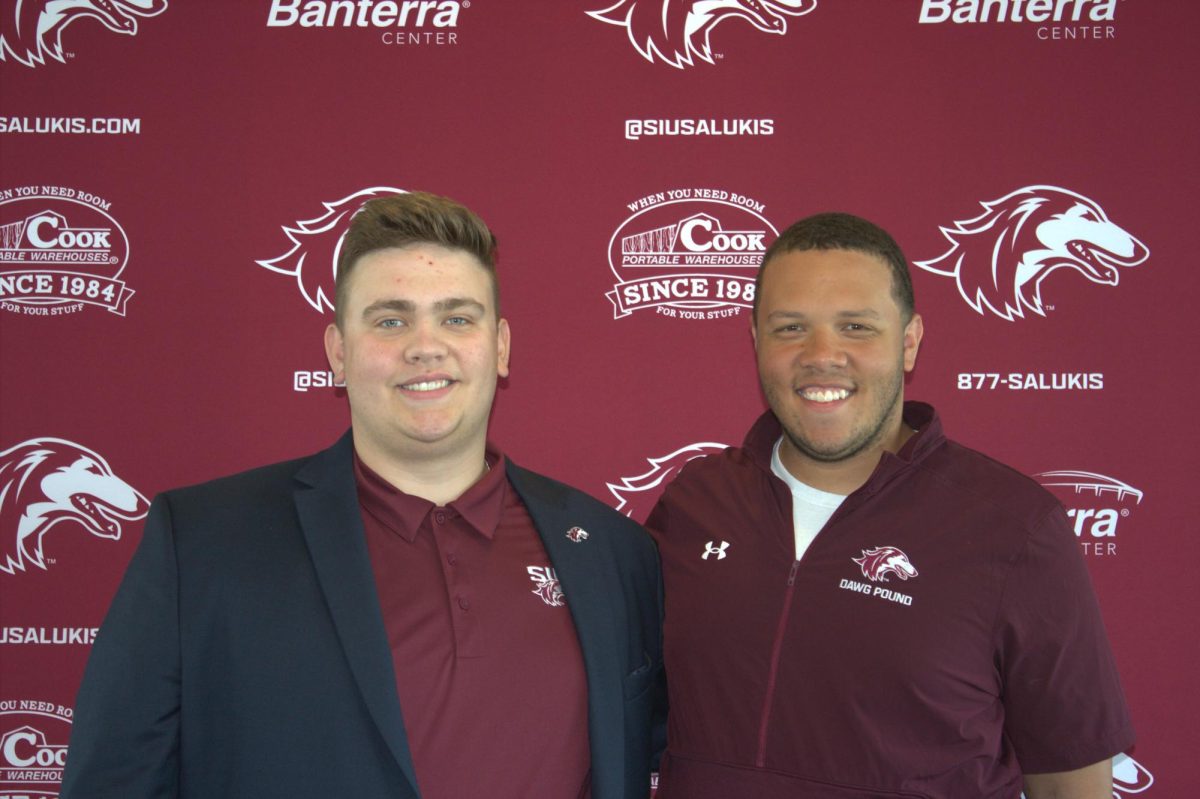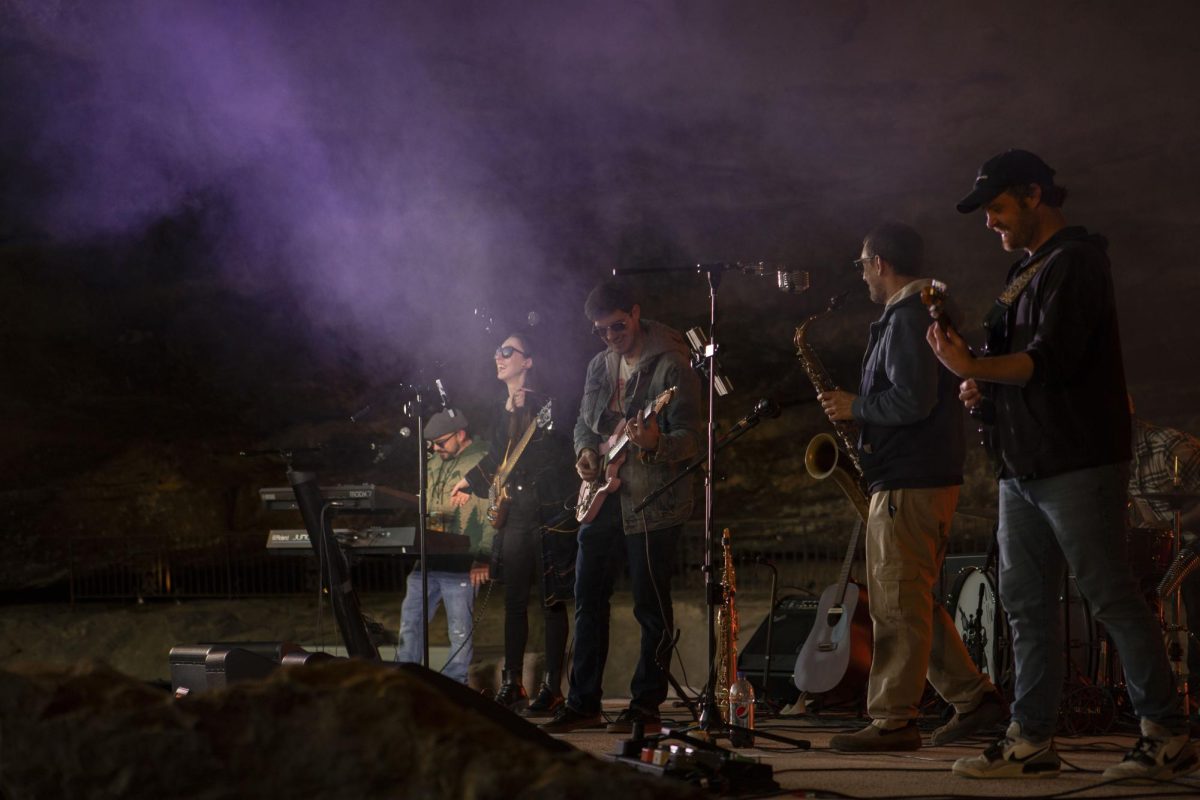SIU’s yearlong plan for a two-minute, 38-second solar eclipse
August 21, 2016
The 2017 Eclipse Crossroads of America event looks to be astronomical for SIU. University officials held an event Sunday to kick off the one-year countdown to this celestial marvel.
The path of the solar eclipse will span the entire United States in August next year, but its pinnacle will be just a few miles south of Carbondale, according to the university’s eclipse webpage.
Though the eclipse will happen at 1:21 p.m., it will appear to be nighttime, the temperature will drop and stars will be clear in the sky for two minutes and 38 seconds as the moon obscures the sun, according to SIU’s webpage. Between 30,000 and 50,000 people are expected to visit the Carbondale area for the event, city officials have said.
Advertisement
Bob Baer, a faculty member in the physics department, said he is hopeful the extra attention on SIU will result in more funding toward the university and the physics department. So far, Baer — coordinator of the Illinois Continental America Telescopic Eclipse Experiment (CATE) — said the only grant the university has received came in the form of a small, $57,000 NASA award.
“When I say small, that’s really small for a university grant,” Baer said. “Realistically, it’s hard to say if we’ll receive more. We haven’t gotten any sponsorship yet but what we do have from NASA is this informal partnership.”
Baer said partnering with NASA for the eclipse show provides free advertising for the event, which became evident Sunday evening when the NASA Edge program was shown via video to visitors at the Student Center Auditorium.
The 30-minute clip featured a number of interviews, including one with Baer, who promoted the events and festivities Carbondale will host next year. The camera also panned over several campus locations, giving birds-eye views of Saluki Stadium and the Student Services Building.
“With them selecting this as the location to broadcast from, that has put a lot of attention on this campus,” Baer said. “I’m hoping that that will really help show the world that SIU Carbondale — well, that it’s here, first of all — because there’s a lot going on here but a lot of people don’t know that, especially outside of Illinois.”
Expecting thousands
Carbondale’s campus would look a little crowded this time next year given the influx of eclipse chasers and students moving in for the first day of classes — which coincides with the eclipse, said Sarah Kovac, president of the Saluki Astronomy Association.
Advertisement*
“When we talked to the school about this a year ago, we said, ‘Hey, this is going to be a really big deal, maybe you should look at the academic calendar,’ but they said ‘No, we’re not going to change classes,’” said Kovac, a senior studying physics. “But I think they’re realizing the mess that it’s going to be — I guarantee you no one’s going to go to class.”
No official announcement regarding changes to next year’s academic calendar has been made, but Baer said he expects interim Chancellor Brad Colwell to do so soon.
“We want to make sure the students are here to see the eclipse and we need a lot of student volunteers and workers to pull this off,” he said. “We not only want them to be here, we need them to be here.”
Although tens of thousands of people are estimated to visit during the eclipse, Baer said it’s still hard to say just how many people Carbondale should actually prepare for.
“We’re issuing tickets for [Saluki Stadium] and [SIU Arena] for the main viewing soon, so once we do that, we’ll have a better idea,” Baer said. “But we’re going to have a lot of free areas too. I don’t want to scare anyone into thinking that they have to pay to see the eclipse because that’s not true at all.”
So far, the university has not had to bring in any outside help to manage the influx of people or the planning of the eclipse festivities, but Thomas Woolf — associate director of University Communications and Marketing — said SIU has partnered with Adler Planetarium in Chicago.
“The Adler Planetarium has been helping develop programming and curriculum that we’re calling ‘edu-tainment’ — so it’s meant to educate as well as entertain people,” Woolf said.
What if it rains?
The only thing in the way of the eclipse now could be the weather, Baer said.
“Everyone is watching the weather today all over the world to see what’s happening along the path. If we have light clouds like we have today, it’s not a problem at all,” he said. “But if you have thunderstorms you aren’t going to see a thing.”
Baer said even if inclement weather blocks a first-perspective view of the eclipse, giant screens will show a live streaming webcast of the event provided by NASA.
“We’ll see it one way or another,” he said.
Getting students involved
Students will be able to sign up to volunteer at the festivities next year using an online system similar to move-in volunteering through the SIU website, but this system is not yet in place. Until then, Baer encourages students to contact Kovac with ideas related to the event and programming at [email protected].
There are also public astronomy observations held throughout the semester for those interested in learning more about the cosmos.
Kovac is hopeful that all this skyward focus will generate interest in students for the celestially centered sciences.
“I really want this eclipse to spark an interest for a new generation of astronomers,” she said.
Additional information about the eclipse can be found at www.nationaleclipse.com.
Staff writer Marnie Leonard can be reached at [email protected] or on Twitter @marsuzleo.
To stay up to date with all your SIU news, follow the Daily Egyptian on Facebook and Twitter.
Advertisement









